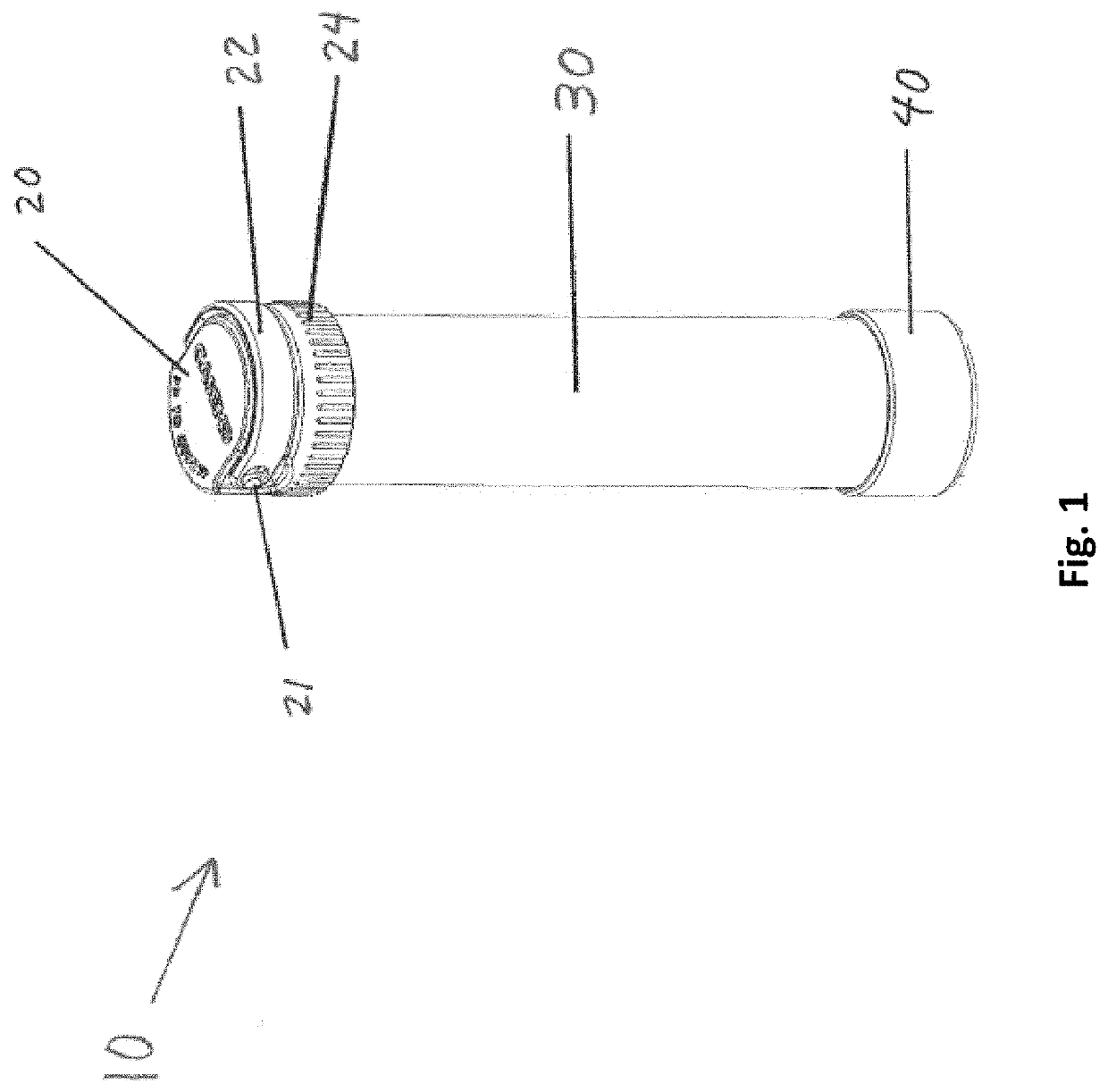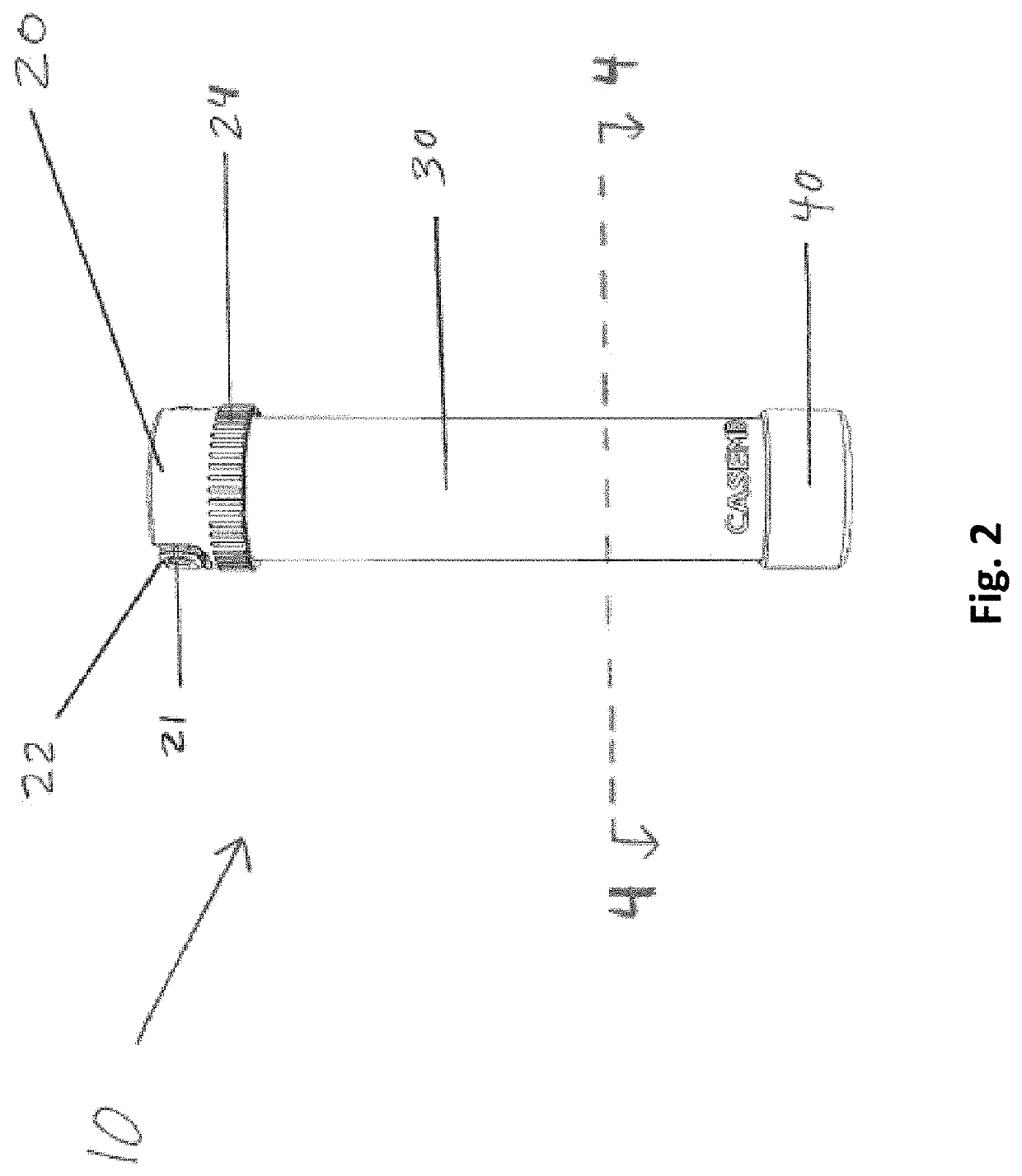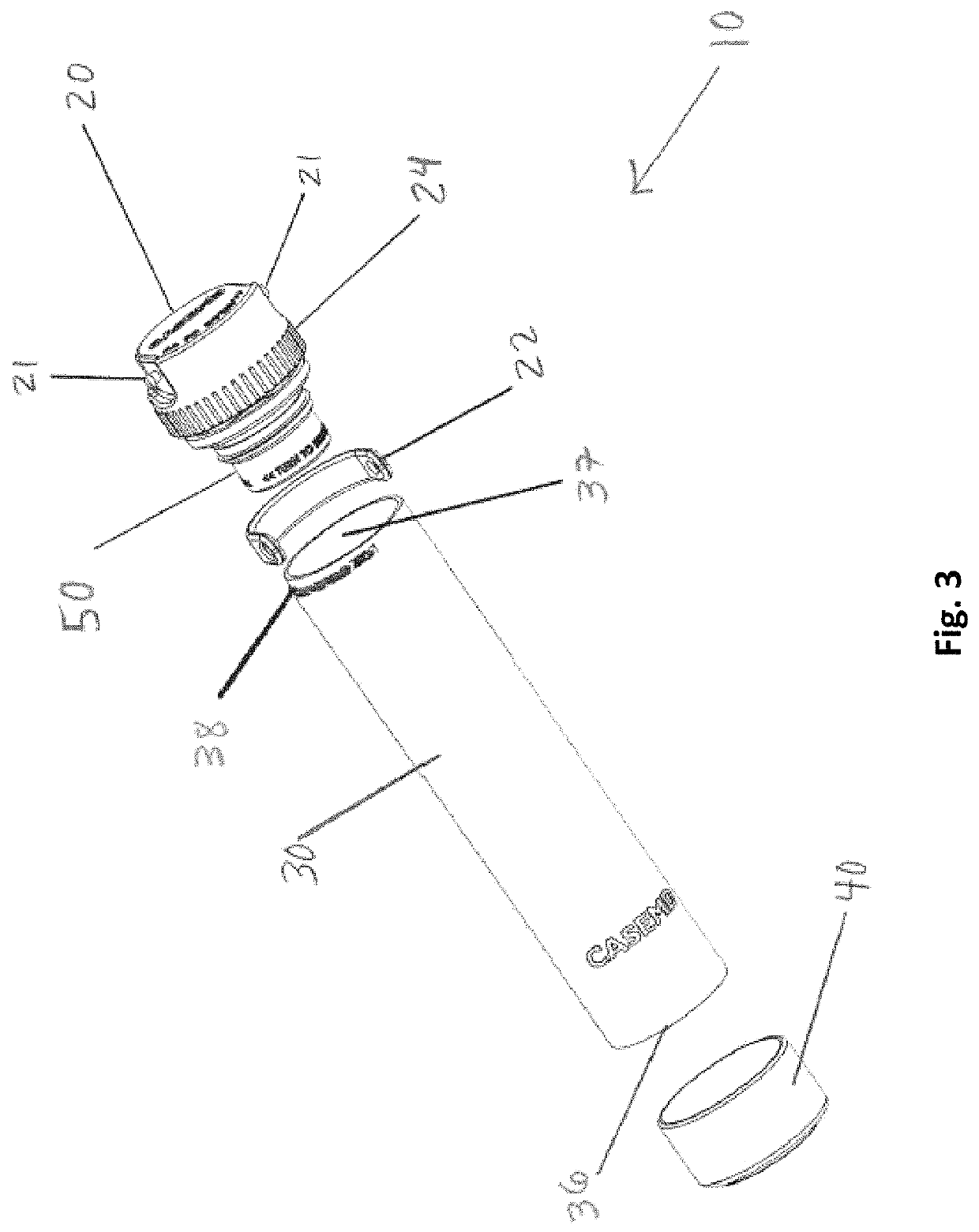Medication storage and transport container
a technology for transport containers and medicine, applied in the field of medicine storage containers, can solve the problems of causing deleterious degradation or chemical transformation, unrealistic to expect, and attempting to solve the problem is somewhat costly
- Summary
- Abstract
- Description
- Claims
- Application Information
AI Technical Summary
Benefits of technology
Problems solved by technology
Method used
Image
Examples
Embodiment Construction
[0007]The present invention is embodied in a medication storage and transport container (sometimes referred to herein as the “medication container”) that may be used to store and transport temperature-sensitive medications. Medications for which embodiments of the present invention will provide protection as characterized include, without limitation, and as identified above, epinephrine, nitroglycerin, some types of insulin, and inhalers that must be stored at “room temperature” conditions.
[0008]Embodiments of the present invention are medication containers that provide at least a protective, temperature buffering means for at least modulating the immediate exposure of such medication to ambient temperatures outside of the container. The medication container hereby described and disclosed can be used to reduce, and in some circumstances, at least for a time, eliminate entirely the risks directly associated with exposure of temperature-sensitive medications, in particular, to ambient...
PUM
 Login to View More
Login to View More Abstract
Description
Claims
Application Information
 Login to View More
Login to View More - R&D
- Intellectual Property
- Life Sciences
- Materials
- Tech Scout
- Unparalleled Data Quality
- Higher Quality Content
- 60% Fewer Hallucinations
Browse by: Latest US Patents, China's latest patents, Technical Efficacy Thesaurus, Application Domain, Technology Topic, Popular Technical Reports.
© 2025 PatSnap. All rights reserved.Legal|Privacy policy|Modern Slavery Act Transparency Statement|Sitemap|About US| Contact US: help@patsnap.com



